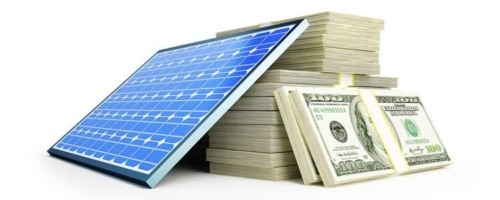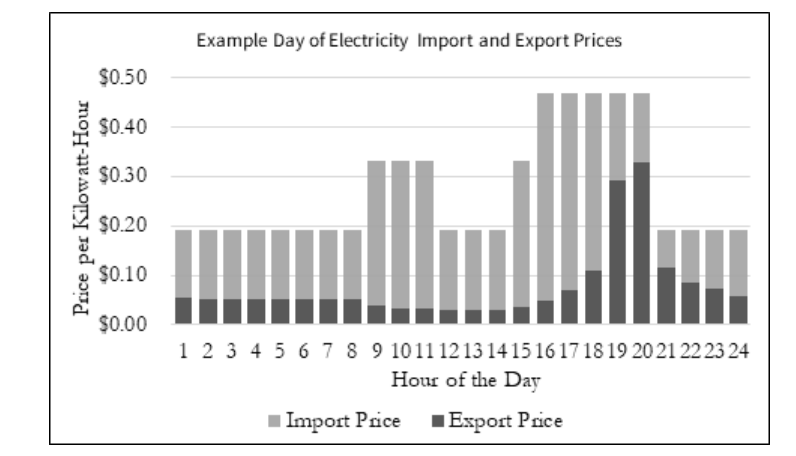CALIFORNIA SOLAR INCENTIVES: NEM 3.0
California solar incentives have just been slashed by the CPUC! The California Public Utilites Commission (CPUC) unanimously voted to pass NEM 3.0 December 15, 2022. Based on the timeline below, utility customers have until April 14, 2023 at the latest to submit interconnection paperwork and be grandfathered into NEM 2.0.
On December 15, 2022, The California Public Utilities Commission (CPUC) passed Net Energy Metering (NEM) 3.0, significantly altering the net billing rates for solar production and ultimately reduce the monthly energy bill savings for homeowners and businesses.
California Solar Incentives have been slashed by the CPUC!
In this article, we’ll break down:
- How Net Metering works
- The proposed changes for NEM 3.0
- The timeline for implementing NEM 3.0
- Frequently asked questions about NEM 3.0
Let’s dive in with a quick review of how net energy metering works.
What is Net Energy Metering (NEM)?
Net Energy Metering describes the structure of a utility bill for homeowners with solar. The utility will net out energy charges for using grid electricity with excess solar energy sent back to the grid, usually over a 1-year period.
If a customer’s solar system generates more energy than the home consumes (say, on a sunny day), then that excess energy is sent back to the grid. The homeowner earns credits for the excess energy. This is offset when a customer pulls energy from the grid (say, in the evening) and is charged for that energy.
For customers who overproduce, and have remaining credit at the end of their year, the utility will pay the customer for those credits at a wholesale rate. If a customer consumes more energy than they produce, they’ll settle up with the utility at the end of the year for their remaining balance.
Net metering is beneficial because solar owners can offset months with higher energy draw by using credits from higher-producing solar months.
What is NEM 3.0?
NEM 3.0 is a new version of net energy metering policy approved by the CPUC on December 15, 2022. It is expected to take effect on April 14, 2023 after a 120-day grandfathering period.
It’s important to note that NEM 3.0 is not retroactive. Solar systems installed under NEM 1 or NEM 2 will remain under their current policy.
5 things to know about NEM 3.0
- It features a major reduction in the net metering value of solar electricity
- There are no new charges or fees, commonly known as “solar taxes”
- Pairing solar with battery storage will be more beneficial under NEM 3.0
- Solar customers that submit their interconnection application before April 14, 2023 can be grandfathered into NEM 2.0 for 20 years
- Solar owners that are grandfathered into NEM 2.0 will be able to add battery storage later and remain on NEM 2.0
The first and most critical point is the changing rate structure that will reduce the value of solar energy.
Lower solar export rates
The biggest change from NEM 2.0 to NEM 3.0 is the rate at which solar owners are compensated for the excess electricity they put on the grid.
Under most net metering policies, including NEM 2.0, solar owners are credited for the full retail value of each kWh of electricity they put on the grid. In this one-to-one exchange, every kWh you put onto the grid (export) offsets a kWh that you pull off (import).
Under the NEM 3.0 proposal, the value of solar exports are no longer be based on retail rates. Export prices are be based on the “Avoided Cost Calculator” and vary by the hour based on Time of Use rates.
Since this structure is even more complicated than it sounds, here’s a chart to summarize how people will be paid for their excess solar production. The gray bars indicate what homeowners pay per kWh for grid electricity and the black bars indicate the rate at which solar owners are be credited for excess solar production under NEM 3.0.
Clearly, they are not the same, and the price of exports is much lower than the price for imports.
“The solar industry and clean energy supporters are still reviewing the CPUC’s proposed decision, but based on an initial analysis, it would cut the average export rate in California from $0.30 per kilowatt to $0.08 per kilowatt and make those cuts effective in April 2023, resulting in a 75% reduction in value of exports,” the California Solar and Storage Association (CALSSA) said in a release.
In a silver lining, net billing under NEM 3.0 will still be settled on an annual basis instead of a monthly basis, as proposed by utilities. The annual cycle is considered more favorable to solar owners.
No new solar taxes
The new rate structure will substantially eat into solar savings and drag out the paypack period of going solar, but there is a shred of good news in the version of NEM 3.0 adopted by the CPUC. A series of charges and fees for solar owners — casually known as “solar taxes” — did not make it into the approved version of NEM 3.0.
These fees were, at one time, expected to add around $60 a month to solar owners’ utility bills. They are now off the table.
A push for pairing solar and battery
A major theme in the NEM 3.0 text is a push for pairing solar with battery storage. That’s because the issue isn’t generating solar electricity in California; it’s storing and using it since peak solar production doesn’t align with peak energy consumption.
If we go back to our handy import/export price graph, you’ll see that export prices skyrocket from 7-8 pm. That’s because energy demand is peaking while solar generation is winding down for the night — which is a problem throughout the state.
In fact, the new export rates can be as high as $3.32 per kWh during peak demand hours in September.
Initial analyses of the NEM 3.0 proposal suggest that the return on investment for solar and battery storage will be roughly equal to the return on investment of solar alone. With that in mind, pairing solar and battery becomes more compelling because you get the same return on investment PLUS the additional benefits of having battery backup for power outages.
In addition to the 30% federal tax credit, there will be an additional $900 million in funding available for the Self Generation Incentive Program (SGIP), which provides battery storage rebates for SCE, PG&E, SDG&E and SoCalGas customers, beginning on July 1, 2023.
20-year grandfathering period for NEM 2.0
Another crucial part of the NEM 3.0 decision is that the 20-year grandfathering period for NEM 2.0 remained intact. It was proposed, at one time, that the NEM 2.0 grandfathering period would be cut to 10 years. So, to see the grandfathering period remain at 20 years is a good thing for solar owners.
That means solar customers that submit a complete interconnection application before NEM 3.0 goes into effect on April 14, 2023 can remain under the much more favorable NEM 2.0.
According to CALSSA, a complete interconnection application includes a:
- Signed contract
- Single Line Diagram (SLD)
- Contractors State License Board disclosure (CSLB)
- Consumer protection guide
- Oversizing attestation (if applicable)
It’s worth noting that you do not need a permit, a completed install, or a completed inspection to be grandfathered into NEM 2. However, there is a three year deadline to complete the actual construction of the solar system as long as the paperwork is filed and accurate.
Modifications that increase the size of the system made after NEM 3.0 takes effect may cause you to lose your NEM 2.0 status.
Bottom line: There is still time to start a solar project and submit an interconnection application before NEM 3.0 takes effect.
NEM 2.0 customers can add battery storage later
Another important nugget of the NEM 3.0 decision is that NEM 2.0 can add battery storage in the future and retain their NEM 2.0 status.
There are two common scenarios where this comes into play:
- If you currently have a solar system in California, you won’t be transitioned into NEM 3.0 if you add battery storage after April 14, 2023
- If you are grandfathered into NEM 2.0 by submitting an interconnection application for a solar system without battery before April 14, 2023, adding battery storage later will not change your NEM 2.0 status
There are several advantages to pairing solar and battery in California, so being able to add battery and remain in NEM 2.0 is a big win for Californians.
When Will NEM 3.0 Take Effect?
Californians have until April 14, 2023 to submit interconnection paperwork to be grandfathered into NEM 2.0 and take advantage of current California solar incentives!
Contact Us TODAY!
To take advantage of current California solar incentives, request your turnkey residential or commercial solar and battery proposal with ROI and financing options by clicking on the CONTACT US BUTTON BELOW



